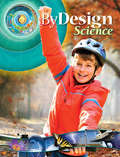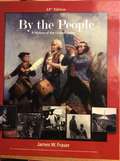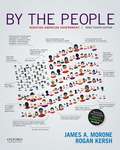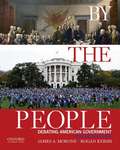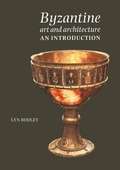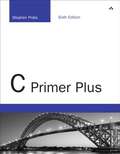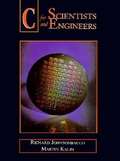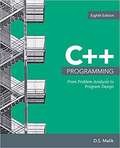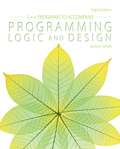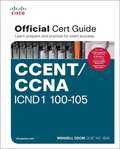- Table View
- List View
By Sea to America (Into Reading, Level V #18)
by Brian Moses Tom McNeelyNIMAC-sourced textbook. Anya, Micah, and their mother set sail for America on the Lusitania. When their mother falls ill aboard the ship, Anya finds a friend in Mr. Krinsky, who helps nurse her mother back to health. But when they arrive in America and Anya is sick, who can the family ask for help?
By The People: A History Of The United States (AP Edition)
by James W. FraserThis is a history of the many different peoples who have shaped the United States as it is today. Whenever possible, I have focused on the stories of average everyday women and men who have created this country. In a survey of U.S. History it is essential to tell the stories of the leaders--the people from George Washington to Barack Obama and also from Benjamin Franklin to Andrew Carnegie to Jane Addams--who have had been the best known leaders of their generation. At the same time I believe it is equally important to tell the story of some of those whose names have been forgotten--women and men who fought in the Revolutionary army, enslaved people who ran away or found other ways to resist and ultimately gain freedom, women who worked for decades to win the right to vote, immigrants who came to the United States in the hope of building a better life, American Indians of many different tribes who found ways to maintain their cultures in spite of formidable obstacles. These and many other people are essential to the story that is told in this book.
By The People: Debating American Government
by James Morone Rogan KershBy the People: Debating American Government, Brief Fourth Edition, reflects the dynamism of American government and politics with superior teaching and learning tools that prepare students to ENGAGE, THINK, and DEBATE now more than ever before. <p><p> Using a storytelling approach that weaves commentary together with historical context, By the People: Debating American Government explores the themes and ideas that drive the great debates in American government and politics. It introduces students to big questions like "Who governs?" "How does our system of government work?" "What does government do?" and "Who are we?" By challenging students with these questions, the text encourages them to think about, engage with, and debate the merits of U.S. government and politics.
By the People: Debating American Government
by James A. Morone Rogan KershIn a storytelling approach that weaves contemporary examples together with historical context, By the People explores the themes and ideas that drive the great debates in American government and politics. It introduces students to big questions like: Who governs? How does our system ofgovernment work? What does government do? and Who are we? By challenging students with these questions, the text gets them to think about, engage with, and debate the merits of U. S. government and politics.
Byzantine Art and Architecture: An Introduction
by Lyn RodleyThe Byzantine empire began with the transformation of the Roman empire initiated by the official acceptance of Christianity and the establishment of Constantinople as the capital city. It ended with the fall of that city to the Ottoman Turks in 1453. The art and architecture of the empire reflects its changing fortunes, the development of Christianity, and the cultural influences that affected it. This book offers a systematic introduction to the material culture of the Byzantine empire, from the fourth to the fourteenth centuries. It provides for the student or any other interested reader a compendium of material which is generally difficult to access: much of the writing on Byzantine art and architecture is not in English, and is published as articles in scholarly journals. The book sets out the subject in an accessible manner, describing and discussing by period the surviving material - and that which can be reconstructed from documentary sources - and exploring its social/historical context. The text is copiously illustrated by well over 400 halftones, plans and maps.
Bíos: Biopolitics and Philosophy
by Roberto Esposito Timothy CampbellRoberto Esposito is one of the most prolific and important exponents of contemporary Italian political theory. B#65533;os-his first book to be translated into English-builds on two decades of highly regarded thought, including his thesis that the modern individual-with all of its civil and political rights as well as its moral powers-is an attempt to attain immunity from the contagion of the extraindividual, namely, the community. In B#65533;os, Esposito applies such a paradigm of immunization to the analysis of the radical transformation of the political into biopolitics. B#65533;os discusses the origins and meanings of biopolitical discourse, demonstrates why none of the categories of modern political thought is useful for completely grasping the essence of biopolitics, and reconstructs the negative biopolitical core of Nazism. Esposito suggests that the best contemporary response to the current deadly version of biopolitics is to understand what could make up the elements of a positive biopolitics-a politics of life rather than a politics of mastery and negation of life. In his introduction, Timothy Campbell situates Esposito's arguments within American and European thinking on biopolitics. A comprehensive, illuminating, and highly original treatment of a critically important topic, B#65533;os introduces an English-reading public to a philosophy that will critically impact such wide-ranging current debates as stem cell research, euthanasia, and the war on terrorism. Roberto Esposito teaches contemporary philosophy at the Italian Institute for the Human Sciences in Naples. His books include Categorie dell impolitico, Nove pensieri sulla politica, Communitas: orgine e destino della comunit#65533;, and Immunitas: protezione e negazione della vita. Timothy Campbell is associate professor of Italian studies in the Department of Romance Studies at Cornell University and the author of Wireless Writing in the Age of Marconi (Minnesota, 2006).
Búsqueda extraterrestre (¡Arriba la Lectura!, Level W #88)
by Sharon ParsonsDesde tiempos remotos, a los seres humanos nos ha fascinado la posibilidad de que exista vida extraterrestre. Tanto es así que las agencias espaciales de todo el mundo han gastado miles de millones de dólares tratando de entender mejor cómo podrían ser esas formas de vida. En este libro repasamos los puntos clave de la historia de los viajes espaciales y también algunas investigaciones espaciales importantes que buscan identificar planetas parecidos a la Tierra que podrían albergar vida extraterrestre. NIMAC-sourced textbook
C Primer Plus
by Stephen PrataC Primer Plus is a carefully tested, well-crafted, and complete tutorial on a subject core to programmers and developers. This computer science classic teaches principles of programming, including structured code and top-down design. Author and educator Stephen Prata has created an introduction to C that is instructive, clear, and insightful. Fundamental programming concepts are explained along with details of the C language. Many short, practical examples illustrate just one or two concepts at a time, encouraging readers to master new topics by immediately putting them to use. Review questions and programming exercises at the end of each chapter bring out the most critical pieces of information and help readers understand and digest the most difficult concepts. A friendly and easy-to-use self-study guide, this book is appropriate for serious students of programming, as well as developers proficient in other languages with a desire to better understand the fundamentals of this core language. The sixth edition of this book has been updated and expanded to cover the latest developments in C as well as to take a detailed look at the new C11 standard. In C Primer Plus you'll find depth, breadth, and a variety of teaching techniques and tools to enhance your learning: Complete, integrated discussion of both C language fundamentals and additional features Clear guidance about when and why to use different parts of the language Hands-on learning with concise and simple examples that develop your understanding of a concept or two at a time Hundreds of practical sample programs Review questions and programming exercises at the end of each chapter to test your understanding Coverage of generic C to give you the greatest flexibility
C for Scientists and Engineers
by Martin Kalin Richard JohnsonbaughThis book, based on the best-seller Applications Programming In Ansi C, includes one of the clearest introductions to C programming available, and assumes no prior programming knowledge. Their new book reflects the clear presentation and excellent examples and programming exercises for which the authors have become well known. Includes nearly 300 numbered examples which show the purpose of various C features and explains how to use C in a wide range of environments. Common programming error sections highlight easily misunderstood aspects of the C language. Of interest to engineers and scientists.
C'est a toi! 1
by Dianne B. Hopen Karla Winther Fawbush Sarah Vaillancourt Toni TheisenNIMAC-sourced textbook
C'est a toi! 2
by Dianne B. Hopen Karla Winther Fawbush Toni Theisen Diana MoenNIMAC-sourced textbook
C'est a toi! 3
by Sarah Vaillancourt Diana Moen Augusta Desimone Clark Richard LaddNIMAC-sourced textbook
C++ Programming: From Problem Analysis To Program Design
by D. S. MalikLearn how to program with C++ using today’s definitive choice for your first programming language experience -- C++ PROGRAMMING: FROM PROBLEM ANALYSIS TO PROGRAM DESIGN, 8E. D.S. Malik’s time-tested, user-centered methodology incorporates a strong focus on problem-solving with full-code examples that vividly demonstrate the hows and whys of applying programming concepts and utilizing C++ to work through a problem. Thoroughly updated end-of-chapter exercises, more than 20 extensive new programming exercises, and numerous new examples drawn from Dr. Malik’s experience further strengthen the reader’s understanding of problem solving and program design in this new edition. This book highlights the most important features of C++ 14 Standard with timely discussions that ensure this edition equips you to succeed in your first programming experience and well beyond.
C++ Programming: From Problem Analysis to Program Design
by D. S. MalikNIMAC-sourced textbook <P><P>Learn how to program with C++ using today's definitive choice for your first programming language experience -- C++ PROGRAMMING: FROM PROBLEM ANALYSIS TO PROGRAM DESIGN, 8E. D.S. Malik's time-tested, student-centered methodology incorporates a strong focus on problem-solving with full-code examples that vividly demonstrate the hows and whys of applying programming concepts and utilizing C++ to work through a problem. Thoroughly updated end-of-chapter exercises, more than 20 extensive new programming exercises, and numerous new examples drawn from Dr. Malik's experience further strengthen your understanding of problem solving and program design in this new edition. You review the important features of C++ 14 Standard with timely discussions that ensure this edition equips you to succeed in your CS1 course and beyond.
C++ Programs to Accompany Programming Logic and Design, Eighth Edition
by Jo Ann SmithAlso known as C++ PAL), the book is designed to provide students with an opportunity to write C++ programs as part of an Introductory Programming Logic course. This textbook assumes no programming language experience and provides the beginning programmer with a guide to writing structured programs and simple object-oriented programs using introductory elements of the popular C++ programming language.
CAESAR AND CLEOPATRA A - History by BERNARD SHAW
by An Introduction notes by A. C. WARDAs to the other plays in this volume, the application of my title is less obvious, since neither Julius Caesar, Cleopatra,nor Lady Cicely Waynflete [in Captain Brassbound’s Conversion] have any external political connection with Puritanism. The very name of Cleopatra suggests at once a tragedy of Circe, with the horrible difference that whereas the ancient myth rightly represents Circe as turning heroes into hogs, the modern romantic convention would represent her as turning hogs into heroes. Shakespeare’s Antony and Cleopatra must needs be as intolerable to the true Puritan as it is vaguely distressing to the ordinary healthy citizen, because, after giving a faithful picture of the soldier broken down by debauchery, and the typical wanton in whose arms such men perish, Shakespeare finally strains all his huge command of rhetoric and stage pathos to give a theatrical sublimity to the wretched end of the business, and to persuade foolish spectators that the world was well lost by the twain.
CALIFORNIA GO MATH: Middle School
by Timothy D. Kanold Edward B. Burger Juli K. Dixon Steven J. Leinwand Matthew R. Larson Martha E. Sandoval-MartinezThis worktext meant for 7th graders covers the important topics in mathematics ranging from rational numbers to Statistics to Geometry to Probability.
CBSE Entrepreneurship
by Central Board of Secondary EducationThe revised edition of Entrepreneurship incorporates new chapters that introduce students to market dynamics and encourage their hidden entrepreneurial skills. The revision aims at providing some background information, case studies, activities, new templates and basic concepts to help the students attain a better understanding of higher-order concepts that are being dealt within greater detail in the curriculum of class XII.
CCENT/ CCNA ICND1 100-105 Official Certification Guide
by Wendell OdomTrust the best-selling Official Cert Guide series from Cisco Press to help you learn, prepare, and practice for exam success. They are built with the objective of providing assessment, review, and practice to help ensure you are fully prepared for your certification exam. CCENT/CCNA ICND1 100-105 Official Cert Guide presents you with an organized test-preparation routine through the use of proven series elements and techniques. “Do I Know This Already?” quizzes open each chapter and enable you to decide how much time you need to spend on each section. Exam topic lists make referencing easy. Chapter-ending Exam Preparation Tasks help you drill on key concepts you must know thoroughly.
